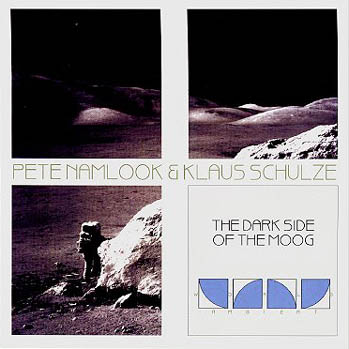 Wish You Were There - The Dark Side of the Moog is probably Namlook's best known series of recordings - it's certainly the first one that I had heard and it's certainly the longest: ten CDs (TDSOTM I through X), plus an Evolution of TDSOTM compilation CD.
Wish You Were There - The Dark Side of the Moog is probably Namlook's best known series of recordings - it's certainly the first one that I had heard and it's certainly the longest: ten CDs (TDSOTM I through X), plus an Evolution of TDSOTM compilation CD. This series is basically a set of collaborations with Klaus Schulze, legendary electronic musician and co-founder of Tangerine Dream. Tangerine Dream was obviously a big influence on Pete Namlook. 1974's Phaedra was one of the the first albums to feature the now classic sequencer-driven sound - the title track relied on the use of the Moog analog sequencer as a substitute for bass guitar - and kicked off the whole Berlin School genre. It reached the Top 10 in the UK with virtually no air play, only by strong word-of-mouth. Tangerine Dream's early albums played a pivotal role in the development of bands such as Kraftwerk, although their later albums were more in the New Age genre.
Tangerine Dream's early sound can be heard in many Namlook recordings. The first TDSOTM recording (1994) sounds so Tangerine Dream/Klaus Schulze, it's hard to hear exactly what Namlook's contribution was. It's as if the student gave the whole session over to the teacher. Also, even though the series title is a Pink Floyd pun (the album is subtitled "Wish You Were There") it's hard to find any connection between the Tangerine Dream sequencer sounds of the album and Floyd's more eclectic approach to music. But in any event, a fun little CD, especially if you're a fan of spacey electronica.
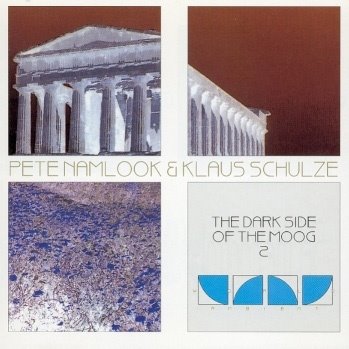 A Saucerful of Ambience - The second entry in the TDSOTM series came out in 1995 and opens with a long sequence of environmental/ambient bird and insect sounds and slowly builds into a sustained space groove. In this case, it sounds like Namlook created the "house," the environment for Schulze to then explore with his Moog, sort of like the Fripp and Eno collaborations of the 1970s.
A Saucerful of Ambience - The second entry in the TDSOTM series came out in 1995 and opens with a long sequence of environmental/ambient bird and insect sounds and slowly builds into a sustained space groove. In this case, it sounds like Namlook created the "house," the environment for Schulze to then explore with his Moog, sort of like the Fripp and Eno collaborations of the 1970s.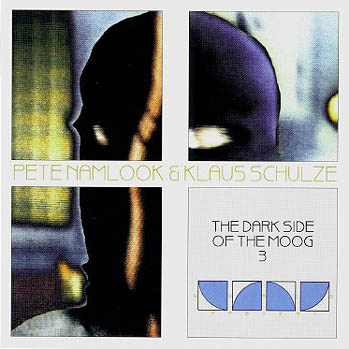 Phantom Heart Brother - 1995's third installment in the TDSOTM series would make good Halloween music - all spooky whistles and atmospherics. The Dark Side, indeed.
Phantom Heart Brother - 1995's third installment in the TDSOTM series would make good Halloween music - all spooky whistles and atmospherics. The Dark Side, indeed.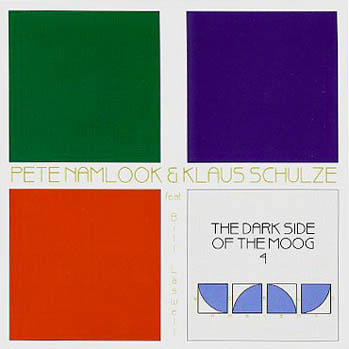 Three Pipers at the Gates of Dawn - In 1996, the duo of Namlook and Schulze became a trio for the fourth TDSOTM CD with the addition of prolific and eclectic bassist and producer Bill Laswell, another electronic music legend (he produced Herbie Hancock's Rockit). Laswell's influence on this recording is profound - this CD is much more rhythmic and driven than the previous three free-form recordings, like a shot of cappucino into the absinthe. This is the first in the series of collaborations that truly sounds collaborative - Namlook's ambience with Schulze's sequencing with Laswell's rhythms - three distinctive contributions to one organic whole.
Three Pipers at the Gates of Dawn - In 1996, the duo of Namlook and Schulze became a trio for the fourth TDSOTM CD with the addition of prolific and eclectic bassist and producer Bill Laswell, another electronic music legend (he produced Herbie Hancock's Rockit). Laswell's influence on this recording is profound - this CD is much more rhythmic and driven than the previous three free-form recordings, like a shot of cappucino into the absinthe. This is the first in the series of collaborations that truly sounds collaborative - Namlook's ambience with Schulze's sequencing with Laswell's rhythms - three distinctive contributions to one organic whole.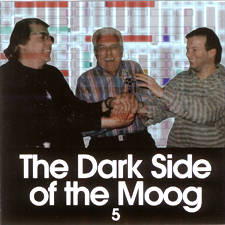 Psychedelic Brunch - The fifth TDSOTM installment, 1996's Psychedelic Brunch, opens with a bit of a surprise - it's introduced by Robert Moog himself! "My name is Robert Moog," he announces, "and my email address is realmoog@greenbrier.com. I would like to present to you, The Dark Side of The Moog."
Psychedelic Brunch - The fifth TDSOTM installment, 1996's Psychedelic Brunch, opens with a bit of a surprise - it's introduced by Robert Moog himself! "My name is Robert Moog," he announces, "and my email address is realmoog@greenbrier.com. I would like to present to you, The Dark Side of The Moog."Oh, how happy Namlook must have been! In the studio with legends Klaus Schulze and Bill Laswell, and having Robert Moog not only announce his project, by name, but even give out his email address! It's the most heterogeneous of the albums, ranging from long synthesized strings passages, to kick-ass electro beats to spooky outer space sounds.
So that's the first half of the TDSOTM series. There is a conceptual continuity throughout, as well as a continued growth and progression (TDSOTM V could not have come out before III). However, there's hardly a lick of Pink Floyd to be heard anywhere other than the titles. I'm not sure if I'll review the next five CDs here, as I might well be on to other things by then.

1 comment:
I have thought, for years that Robert Moog says 'big briar'.
I'm listening to dsotm x at the moment. I'll put on v after.
Robert and Pete RIP
Post a Comment